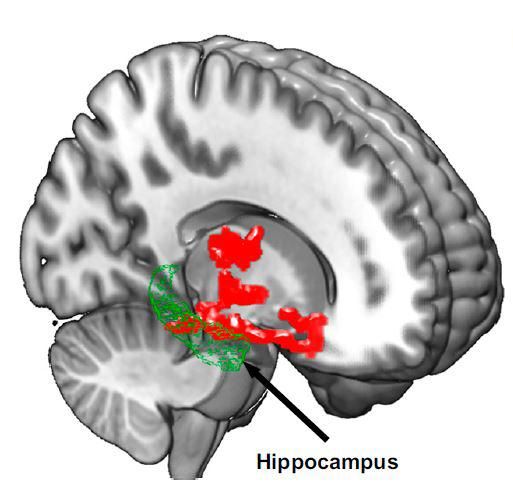Bayer aims to sustainably improve performance with new organization
New operating model aims to reduce hierarchies, eliminate bureaucracy and accelerate decision-making processes
The Bayer Group is introducing a new operating model called “Dynamic Shared Ownership” (DSO) worldwide, which will reduce hierarchies, eliminate bureaucracy, streamline structures and accelerate decision-making processes. The aim of the new operating model is to make the company much more agile and significantly improve its operational performance. In a joint declaration, the Board of Management of Bayer AG and the employee representatives on the Supervisory Board have agreed on principles for the future of the company. This also includes regulations for the significant staff reductions expected in the course of the restructuring at the Group companies in Germany.
“Bayer is currently in a difficult situation for various reasons. In order to make rapid, sustainable improvements to our operational performance and our room to maneuver, far-reaching measures are necessary. We want to get Bayer back on the road to success quickly,” explains Heike Prinz, member of the Board of Management and Labor Director of Bayer AG.” Company management and employee representatives must pull together and agree on the steps expressed in the Joint Declaration to overcome this challenging situation and secure the future of the company. Only through decisive, collective action will we be able to remove all internal obstacles and put Bayer back on track for future profitable growth.”
“We see a great opportunity in the new operating model”
“As an employee representative body, we are vigorously campaigning for the continued existence of the Group with all three divisions. We see the new operating model as a great opportunity to significantly improve our economic situation. However, in the company's strained economic situation, the programs and measures already underway are not sufficient, which is why, with a heavy heart, we have agreed to further cuts,” says Heike Hausfeld, Chairwoman of the Central Works Council of Bayer AG. “In the negotiations with the employer, however, we have succeeded in making the forthcoming job cuts as socially responsible as feasible within the existing possibilities. We were also able to ensure that the general job security is extended by a further year until the end of 2026” emphasizes Hausfeld.
“Our new operating model is designed to make Bayer faster and more innovative. However, its introduction will come at the expense of many managerial employees,” explains Dr. Barbara Gansewendt, Chairwoman of the Bayer AG Group Executives’ Committee, which represents the interests of managerial employees. “This is an extremely bitter development for us, but there is no viable alternative under the current circumstances. However, we have ensured that employees whose jobs will be eliminated under the new system will receive not only an attractive severance payment at market conditions, but also the necessary support and time for personal orientation in order to find new employment as quickly as possible.”
"Our top priority is to secure the future of the employees at Bayer. We see the greatest opportunities for this in the existing ONE Bayer structure. That is why we have agreed to the path we have now taken and are open to Bayer's new organizational model," says Francesco Grioli, member of the Supervisory Board of Bayer AG and of the Executive Board of the Mining, Chemical and Energy Industrial Union. "A lot will change for our employees. We will work together to ensure that everyone can safely embark on new paths."
The job cuts are to be implemented swiftly over the coming months and completed by the end of 2025 at the latest. In line with the principles of DSO, implementation will be largely decentralized, meaning that its scope cannot be quantified for the time being. As DSO intends to reduce hierarchies and complex structures within the company, the job cuts will include employees with management or coordination tasks. Bayer currently employs around 22,200 people in Germany.
Regulations for job cuts in Germany
In the German Group companies, Bayer is offering employees severance agreements staggered according to age, as in previous restructuring measures. The company is also offering employees whose jobs are eliminated a reflection period of up to six months, during which they will be supported by targeted positioning and external placement offers to quickly find new employment outside the Group that matches their skills and qualifications. If required, affected employees can also receive individual training measures for the external job market for up to twelve months. A “Future Skills Academy” is also intended to identify skills relevant to the future and support employees in acquiring them.
In order to give the employees affected by the loss of their jobs the necessary time and security for external reorientation and qualification, the company parties are extending the agreement on job security with the waiver of compulsory redundancies until December 30, 2026. This also offers employees affected by the loss of their jobs more time and security for reorientation and qualification. Employment contracts of employees whose jobs have been lost and who have not left the company by the end of 2026 will be terminated as of December 31, 2026, for operational reasons if necessary. “The fact that job security is only being extended by one year makes it clear that we are in an exceptionally serious situation. The risk of dismissals for operational reasons at the end of a job security agreement, which has been rather theoretical for 27 years, has thus become a real option. Despite the difficult situation, we found this extremely difficult to accept. However, we agree with the employer that compulsory redundancies should only be used as a last resort in future,” explains Hausfeld.
Bayer confirms future concept for Germany
The joint declaration also contains a number of important commitments for the company's location in Germany and its employees. For example, the parties reaffirm the Future Concept for Germany adopted in March 2022, which aims to strategically develop Bayer in Germany and align the business units there for the future. Bayer also intends to further develop the corporate headquarters located in Germany in accordance with the DSO. The parties also agree to improve the company pension scheme at Bayer and to complete the already initiated repatriation of initial vocational training from external service providers to the company by the end of 2024 as planned.

























































